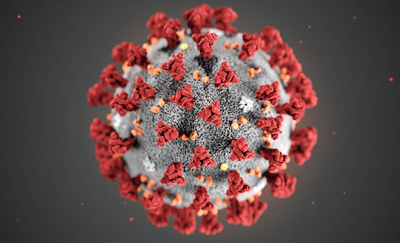
50,000 new fatalities in the last two weeks alone
WASHINGTON (TIP): Coronavirus deaths in the United States surpassed 450,000 on Thursday, February 4, and daily deaths remain stubbornly high at more than 3,000 a day, despite falling infections and the arrival of multiple vaccines, says an AP report. Infectious disease specialists expect deaths to start dropping soon, after new cases hit a peak right around the beginning of the year. New COVID-19 deaths could ebb as early as next week, said the new director of the Centers for Disease Control and Prevention.
But there’s also the risk that improving trends in infections and hospitalizations could be offset by people relaxing and coming together — including this Sunday, to watch football, she added.
“I’m worried about Super Bowl Sunday, quite honestly,” Dr. Rochelle Walensky said Thursday in an interview with The Associated Press. Walensky said one reason cases and hospitalizations are not rising as dramatically as they were weeks ago is because the effect of holiday gatherings has faded.
The effect on deaths is delayed. The daily toll amounts to 50,000 new fatalities in the last two weeks alone.
“We’re still in quite a bad place,” she said. The nation reported 3,912 COVID-19 deaths on Wednesday, down from the pandemic peak of 4,466 deaths on Jan. 12.The biggest driver to the U.S. death toll over the past month has been California, which has averaged more than 500 deaths per day in recent weeks.
California’s experience has mirrored many of the inequalities that have been exposed since the pandemic began nearly a year ago, with people of color being hit especially hard.
For example, Latinos make up 46% of California’s overall death toll, despite being 39% of the state’s population. The situation has worsened in recent months. In November, the daily number of Latino deaths was 3.5 per 100,000 residents, but that rate shot up to 40 deaths per 100,000 last week.
Alabama is another hot spot. The seven-day rolling average of deaths there has risen over the past two weeks, from 74 to 147 deaths per day. Kentucky, North Carolina, Oklahoma, South Carolina and Tennessee also saw surges in deaths. The hardest hit demographic groups continue to be the oldest and frailest, said Dr. Thomas Holland of Duke University.
When coronavirus first swept through the country, it was concentrated in nursing homes, prisons and other congregate care settings. It later spread more broadly.
“But deaths have still been concentrated among older patients and patients” with other health problems, Holland said. “Even as the pandemic has spread more broadly in the population, the demographics of who dies from COVID has not really changed.”
In Florida, for instance, 83 percent of deaths attributed to the virus have been in people 65 and olde Public health experts are watching Florida closely this week, because the Super Bowl will be played in Tampa. City leaders and the NFL are trying to ensure social distancing by capping attendance at a third of the stadium’s capacity — 22,000 people. Still, there will be parties, events at bars and clubs, and other activities that draw people together. While most people who become infected will recover, others face a much longer road. It can take a week or two to get sick enough to end up in the hospital. Then, those who are severely ill may end up in an ICU for many weeks, and some will die.
“The patients who don’t do well are often in for these long and very stormy courses, and the patients who die, that’s typically weeks into their hospital stay,” Holland said.
Treatments have evolved for COVID over time, but there have not been any “game-changing miracle treatments” on par with the development of the vaccine, Holland said.
“We’ve had things on the margin that are helpful,” Holland said.
Among those, the use of steroids for patients who require oxygen, different ventilator strategies and preventing and managing blood clots. There’s also the use of monoclonal antibodies for outpatients early in their illness who do not need to be on oxygen, but who might be at higher risk of complications.
In addition, changes in testing have helped.
“Clearly, if people know they’re infected, they’re going to be more likely to do the things they need to do, like staying at home and quarantining or isolating,” he said.
Looking forward, the big concern is how the virus is changing, shifting into new strains that are potentially more infectious and better able to evade antibody products or to make vaccines less effective.





Be the first to comment